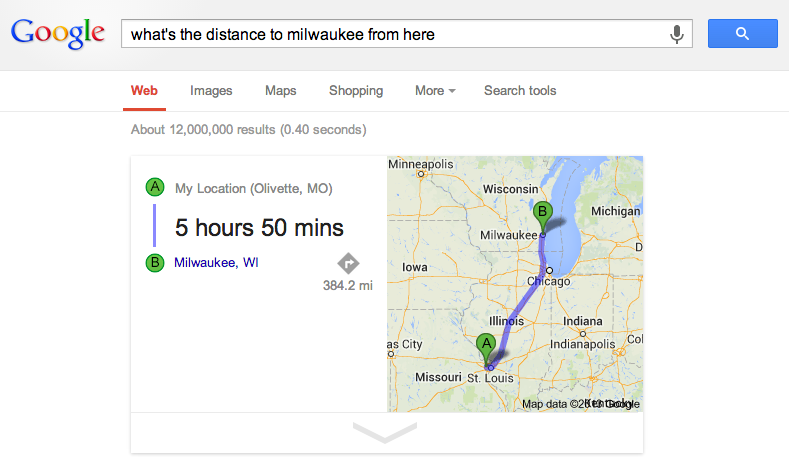Last Friday was Google’s 15th birthday, and the world’s search engine BFF generously gave us two presents!
Hummingbird Update Increases Functionality
First of all, they announced a new algorithm called “Hummingbird,” which they say is the most significant update to the algorithm to date. However, unlike past updates like Panda and Penguin, Hummingbird does not affect the ranking or valuation of web sites as much as it affects user experience and functionality.
In fact, you could argue that this is hardly news at all since the new features are logical extensions on current features and functionality, such as contextual searching and the Knowledge Graph. Just like an athlete is expected to train in the off-season and perform better season after season, we expect Google to continually find ways to improve its flagship service (but if you’ve used any of their other services like Calendar or Spreadsheets, you can see where their priorities lie).
Now then. Hummingbird. What’s new?
I could probably get away with saying “nothing,” but that wouldn’t be fair. As mentioned above, these are logical additions to Google search based on what they’ve been building, but Hummingbird was only announced on Friday. The changes made so much sense that they had actually been implemented months ago and no one really took much notice.
It seems that the main point of Hummingbird is an enhanced ability to find answers to long queries. Think about it: up until now, we’ve mostly been searching using short keywords and phrases through a keyboard or a cell phone touch pad. Now, however, most—if not all—smartphones on the market today have the capability to be talked to. The iPhone has Siri and Android has S Voice, both are products that are capable of receiving a full human question through speech and turning that into an answer. And up until now, the results have sometimes been inaccurate or they have left something to be desired.
Now Google is better able to take these long queries—like a full question—and ‘translate’ that into a real-world answer. For example, now when you ask a question like, “what’s the distance to Milwaukee from here?“, Google automatically pulls up a map showing the driving distance from your location (gathered either from your computer’s IP address or from your phone’s GPS or mobile data signal), complete with one-click driving directions.
Google also uses its Knowledge Graph and better contextual understanding of language to answer these kinds of long-form questions. Here’s something to try: tell Google “show me pictures of the Gateway Arch“. Right there at the top is the answer: pictures of the Arch! And without having to click further, you have all of the Knowledge Graph information on the right as well. (But we’ve seen hints of this before.)
The cool part is that Google is now better able to pick apart a query to determine what you want to find out. It knows you want to see images of the Arch, so that’s what it delivers—along with other handy information. And even though it has limited functionality right now, Google can also remember what you searched and string searches together.
For example, after you searched for pictures of the Arch, you could then ask Google “how tall is it?” and get the answer you were looking for: the height of the Arch. Google is smart enough to know what you were probably referring to with “it”.
Change in Mobile Ads Could Affect Prices
Google also decided to change something else on its birthday: the way mobile ads look.
This was a slight change, but it could have surprisingly wide-reaching effects. Over the last few months, the Federal Trade Commission (FTC) has been getting stricter about businesses and individuals disclosing their ads online. This can be seen on Twitter when a celebrity endorses a product and has to use a hashtag like #ad or #paid (B-listers are particularly vulnerable) just as a mobile PPC ad now says “Ad” very clearly in yellow on the ad itself.
There will still be up to three ads that show up on a mobile search, but the fear is that as consumers get used to their placement and see their designation so clearly, they may be more likely to quickly swipe down to the other results, ignoring the ad. This could, in turn, drive the price of certain ad groups downward because of decreased demand. However, it will take some time before this kind of eventuality can be determined.
We always stay on the lookout for updates and changes from Google. It’s can be a busy job, though.





